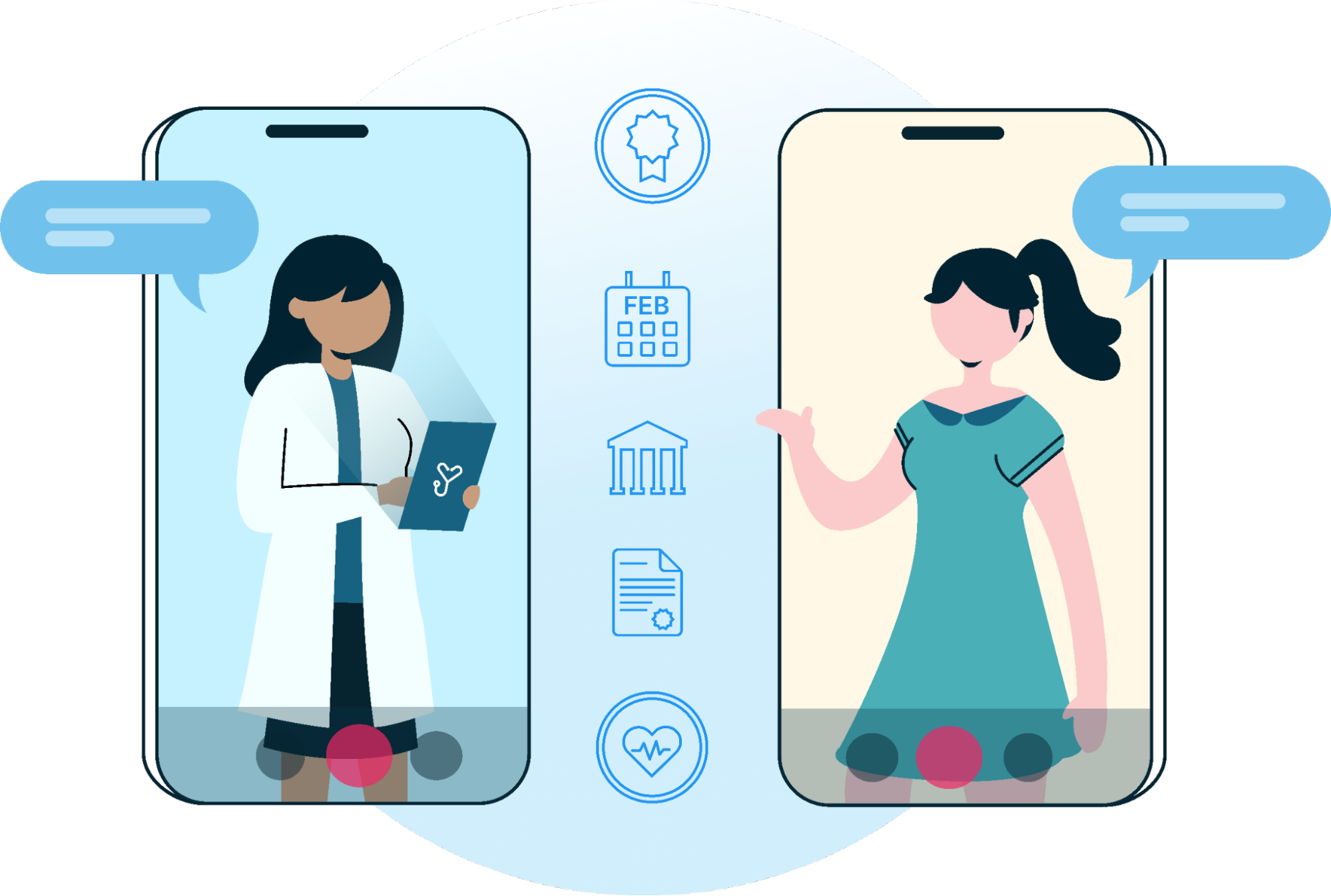The End Of The Public Health Emergency Part 3 – Temporary Changes Until The End

As the PHE ends, it’s important to know what is changing so you can prepare. In part 3 of our blog series, Mend reviews the temporary changes that will end on May 11, 2023.
Will virtual care still count as telehealth excepted benefit? Can providers prescribe controlled substances without an in-person exam? What about telehealth HIPAA compliance? As we near the PHE ending on May 11, 2023, providers must know which Medicare changes were only temporary and which are now permanent. In the final part of our 3-part series, we’ll cover which telehealth policies end immediately with the PHE.
The End Of The PHE Part 1 – Permanent Medicare Changes and Their Effects
The End Of The PHE Part 2 – Temporary Medicare Changes and Their Effects
What Ends Immediately with the PHE?
The PHE allowed for flexibility in providing the following services. Some of these flexibilities will not continue after the PHE ends in May. Healthcare companies that have been relying on these should start taking action to address these now before the PHE ends.
The Use of Non-HIPAA Compliant Communication
During the pandemic, the HHS Office for Civil Rights allowed health teams to use telehealth to provide virtual care even if they didn’t follow the usual privacy and security rules under HIPAA. This was as long as providers made a good-faith effort to protect patients’ information.
However, this exception will end after the PHE is over. After May 11, providers must follow the usual HIPAA rules when using telehealth. Otherwise, they may risk facing penalties for noncompliance.
To help providers prepare, the OCR has provided more information on how HIPAA rules will apply to telehealth.
Moving forward in this new digital landscape, patient privacy, and security is paramount. Patients deserve (and demand) privacy and safety, and providers have an immense legal duty to protect their patients’ information.
Many providers were using standard video conferencing tools during the PHE. These do not always include the security required with HIPAA compliance in telemedicine. This negligence could result in cyberattacks, the release of patient information, and legal action. That’s why it’s essential to adopt a HIPAA-compliant telehealth program when offering virtual care services.
Rx Controlled Substances without an In-person Exam
During the PHE, the Drug Enforcement Agency (DEA) allowed doctors to prescribe certain medications to patients through telehealth. This allowance did not require an in-person visit at the time. This helped many people get the medical care they needed, even if they couldn’t go to a doctor’s office.
If the DEA doesn’t take action before May 11th, the old rule will go back into effect. Patients will once again have to see a doctor in person to get certain medications. This means that people who were able to get prescriptions through telehealth may need to find a new doctor. Or, they might have to go to an office in person.
There are proposals happening now, however, to make this change permanent and allow more doctors to prescribe medication through telehealth. Policymakers have yet to reach a conclusion. As this is still changing, it’s advisable to follow updates on the CMS website and seek legal counsel.
End of Telehealth & RPM Copayment Waivers
The U.S. Department of Health and Human Services (HHS) allowed providers to reduce or waive the cost of telehealth and remote patient monitoring services for Medicare patients during the PHE. This means that patients don’t have to pay as much, or sometimes anything at all, for these services.
However, this policy only applies during the pandemic, unless the OIG says otherwise. After May 11th, providers will not be able to reduce or waive costs for patients unless there’s a new policy. Providers that offer these services need to figure out how to collect these payments from patients in the future.
The easiest way to solve this issue is with a sophisticated patient engagement platform. Mend allows health teams to offer seamless in-person and virtual visits, all while providing a convenient and efficient way for patients to pay for their medical services. With Mend’s automatic patient payments, providers can even reduce AR days through our proactive and simplified payment processing system.
[RELATED: eBook: How to Automate Patient Payments Before & After the Visit]
Through the End of the PHE Calendar Year – 2023
To make matters more complex, there are a few more telehealth changes that providers need to know. The following pandemic-era policies extend past the PHE end date of May 11. These will instead cease at the end of the calendar year of 2023.
However, it is possible that the CMS may extend these policies. If so, these policies may appear within the Physician Fee Schedule in 2024. Providers can stay abreast of the policies by viewing the most up-to-date Physician Fee Schedule on the CMS website here. A search database for current payment rates can also be found here.
Virtual Presence for Direct Supervision
The CMS made a temporary change to the rules that required providers to be physically present during certain procedures. They allowed supervising health teams to use real-time video technology to remotely supervise these procedures during the PHE.
However, the CMS will not be continuing this policy beyond the end of the year. This means that the rule requiring providers to be physically present during certain procedures will go back into effect.
Medicare Payment Parity
During the PHE, the CMS paid higher reimbursement for doctors for providing services to patients through video visits from their homes. This meant that doctors could get paid the same amount for a video visit as they would for an in-person visit.
However, these higher payment rates for video visits are set to end at the end of this year. This means that doctors might get paid less for video visits than they did during the pandemic unless the government decides to extend the higher rates.
Medicare’s Category 3 Telehealth Codes
These codes will remain reimbursable through the end of the PHE year. The CMS defines Category 3 as services that likely have a clinical benefit when offered via telehealth, but lack sufficient evidence to justify permanent coverage.
Start Preparing for the PHE ending today
As the PHE draws to a close, it’s crucial that providers take action now to stay ahead of policy changes. Mend is here to help. Our fast and frictionless platform allows providers to effortlessly integrate virtual and in-person visits, streamline payment collections, and ensure full HIPAA compliance. We’re committed to enhancing your telehealth experience and providing top-notch support every step of the way.
Ready to see Mend in action? Schedule a demo today and see how our technology can transform your digital health services.
Disclaimer:
Mend is providing this series for informational purposes only. Stay up-to-date with the latest policy changes via the Center for Connected Telehealth Policy and CMS websites. This is not legal advice. Always consult legal counsel.
FAQs
What does the end of PHE mean?
On January 30, 2023, the Biden Administration announced its intent to end the COVID-19 PHE on May 11, 2023. During the PHE, providers relied upon many telehealth and other healthcare related flexibilities in order to safely deliver care. Some of these policy changes are now permanent, while others will expire at the end of the PHE.
What changes are coming to telehealth in 2023?
Three major changes are coming to telehealth when the PHE ends on May 11, 2023. First, the discretion for non-HIPAA compliant software is no longer in effect. Secondly, providers will need to have in-person appointments with patients to be able to prescribe certain controlled substances. After May 11, providers offering telehealth may no longer reduce or waive any cost-sharing obligations that patients may owe for such services.
How does HIPAA impact changes to PHE?
During the PHE, providers could use methods for communicating with patients that may not have been fully HIPAA compliant. When the PHE ends on May 11, this discretion ends. Providers must ensure their telehealth platform is HIPAA compliant or risk potential federal penalties.
Keyword:
Find a Topic:
Recent Posts
- Compassionate Foundations: Self-Care for Mental Health Providers
- Behavioral Health News: Mend Partners with Leading Community Mental Health Organizations to Reduce No-Shows and Increase Access to Care
- Understanding SAMHSA’s Key Changes to 42 CFR Part 8: A Guide for Healthcare Professionals
- Becoming a CCBHC: Staffing Requirements
- Empowering Change: SAMHSA’s Impact on Behavioral Health Through Grant Funding, Innovation, and Collaboration


